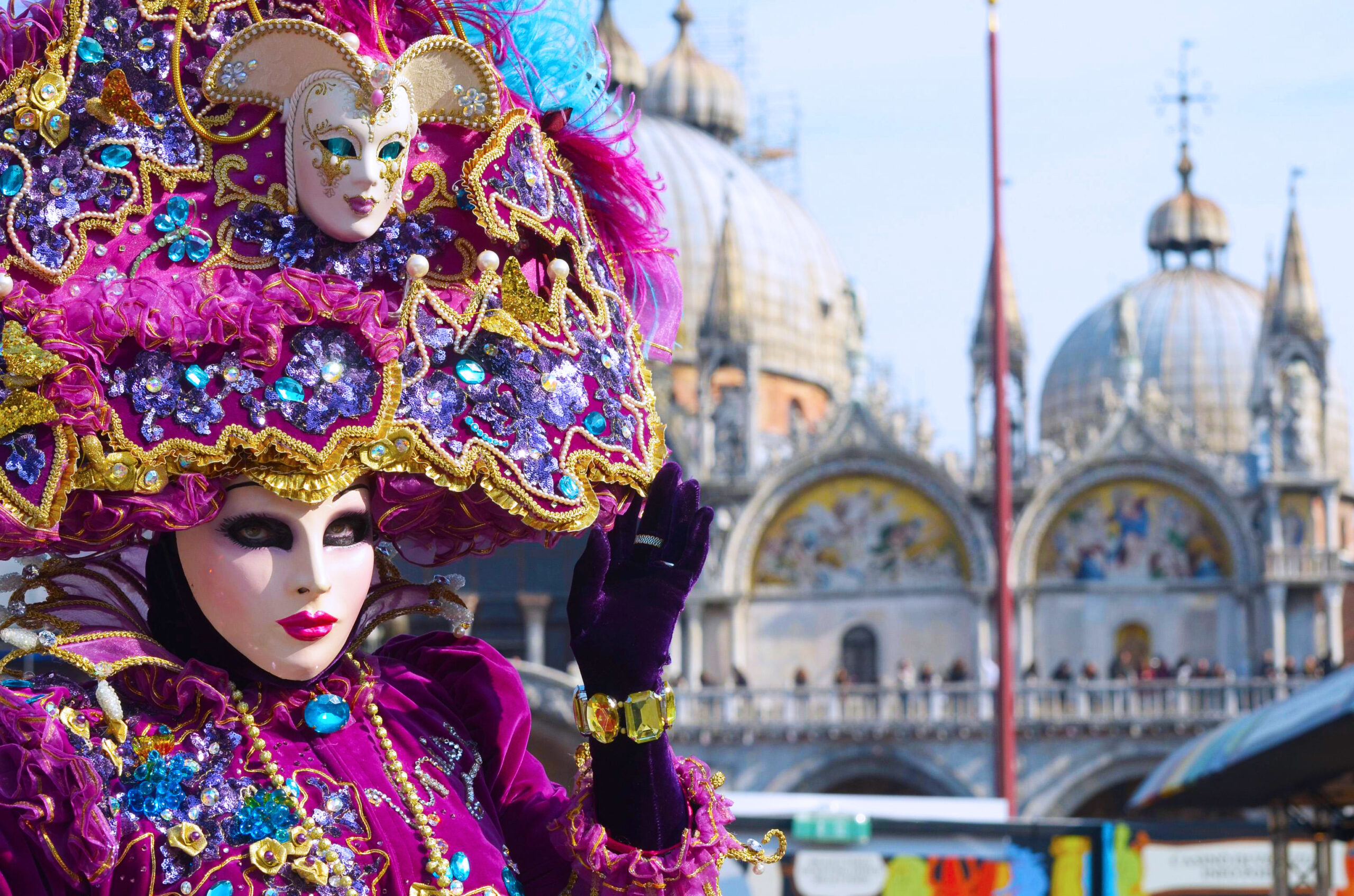Each year during the weeks leading up to Lent, Venice is transformed into a Disneyland for adults, with the vibrancy and excitement of Carnevale. Entertainment, costumes, music, food and a party-like atmosphere envelope the lagoon city. Among the most popular and important events in the Veneto region, Carnevale in Venice has been reinvented. It has become the ideal location to express the spirit, enthusiasm and merriment of the days and weeks preceding Lent, where social barriers are broken and everyone’s spirts are lifted.
Venice, as is the case with several other Italian cities, finds its Carnevale roots in the Saturnalia festival of ancient Rome. During the festival period, social order and standings were placed on hold, as slaves and free citizens poured into the city to celebrate with music and wild dancing. Venice reinterpreted the ancient festival to meet the needs of the Venetian Republic and promoted Carnevale as a means to allow everyone, especially the lower classes, a time have fun. This emotional outlet preceded the strict moral code imposed during Lent and masks played a central role. The anonymity of the mask helped to eliminate social divisions and also allowed participants to poke fun at the aristocracy and Venetian authorities.
The word Carnevale literally means ‘farewell to meat,’ and is traced to a document of the Venetian Doge Vitale Falier of 1094, when it was used (for the first time) to describe a time of merriment, which was promoted for all of the Republic’s citizens. It was almost two hundred years before Carnevale became an official holiday. In 1296, a decree of the Venetian senate declared that the day preceding the beginning of Lent would be a public holiday. The celebration included jugglers, acrobats, musicians and dancers – participants still associated with the festival to this day.
For many centuries, Venice’s Carnevale lasted about six weeks, beginning the day after Christmas and ending the day before Ash Wednesday. As well as large outdoor parties, small performances and shows of various kinds were organized in private homes, theaters and cafes. As the wine flowed, these celebrations often turned into the kind of wild parties that would have made the ancient Romans jealous. It was in the elegant palazzos, with lavish masquerade balls, that the long and fascinating tradition of masked parties in Venice began.
By the 18th century, the Venetian Carnevale was renowned throughout Europe. The exciting atmosphere, the comedy, masks, spectacular shows and the public gambling houses made Venice the Las Vegas of its day. As its international acclaim grew, so did the number of visitors to the city.
As Carnevale peaked in early 1700s, the traditional features of the festival became subject to abuse, as thieves in masks had a field day robbing visitors and the conduct of many elevated to roguery, mayhem and harassment. These serious excesses forced the Venetian Republic to issue a series of decrees to limit abuses and the fraudulent uses of masks and costumes. Unfortunately, these measures gradually undermined the very essence of the Carnevale.
With the fall of the Venetian Republic, a permanent ban of Carnevale costumes was imposed, with the exception of private parties held in palaces. A long period of decline ensued which led to the gradual shutdown of all parties connected to the celebration. The last Carnevale in Venice was held in 1797.
The fall of the Republic at the hands of Napoleon marked the end of the long independence of Venice and the abolition of the many traditions of the Carnevale for almost two centuries. Only in 1967 were the parties reorganized with parades of masks and costumes, bringing these time-honored traditions back to life. In 1979, a program to engage the residents of Venice in the festivities was drafted to return the Carnevale to its origins. The new formula has become a success story that has continued and grown. The spirit and pageantry of the Venetian Carnevale is now firmly established and we can look forward to it for all the years to come!





